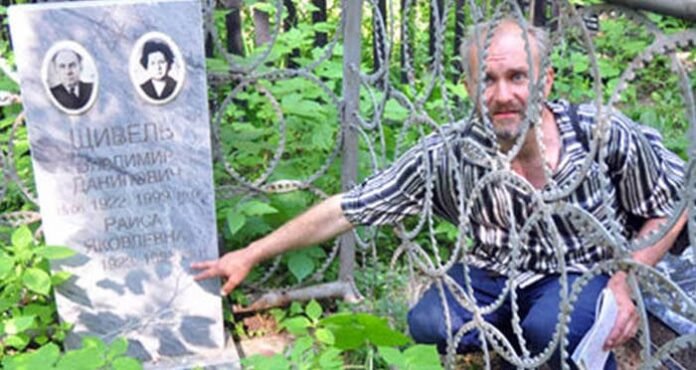Anatoly Moskvin is a name that sends shivers down the spine of anyone who hears his story. Known as the “Russian Dollmaker,” Moskvin’s life took a dark and macabre turn when his secret obsession with mummifying corpses of young girls came to light. A historian by profession, Moskvin’s actions stunned the world and opened a window into the complex psyche of a man whose brilliance was overshadowed by his chilling crimes.
In this article, we delve into the life, crimes, and psychological profile of Anatoly Moskvin, piecing together the events that led to his arrest and the horrifying discovery of his collection of mummified bodies.
Early Life and Academic Prowess
Childhood and Education
Born on September 1, 1966, in Nizhny Novgorod, Russia, Anatoly Moskvin was an exceptionally gifted child. He showed an early aptitude for learning, particularly in linguistics and history. His fascination with languages led him to master more than a dozen, including English, French, German, and Latin. Moskvin’s academic prowess earned him a place at Moscow State University, where he specialized in Celtic studies.
Despite his intellectual brilliance, Moskvin was described as a loner. His peculiar interests, including a fascination with cemeteries and death rituals, set him apart from his peers. Childhood experiences, such as a traumatic encounter with a funeral procession and an obsession with the occult, likely played a role in shaping his dark inclinations.
Career as a Historian
Moskvin’s academic career was marked by numerous accolades. He published extensively on topics ranging from Celtic rituals to local history. His work was respected in scholarly circles, and he was considered an authority on ancient burial rites. Moskvin’s deep knowledge of cemeteries, however, masked a sinister hobby that would later shock the world.
The Dark Obsession: Collecting Corpses
The Secret Life
Unbeknownst to his colleagues and friends, Anatoly Moskvin had been living a double life. Over the course of more than a decade, he frequented cemeteries under the guise of conducting research. In reality, he was exhuming the bodies of young girls, aged 3 to 12, and mummifying them in his apartment.
Moskvin’s method of preserving the bodies involved wrapping them in cloth, applying wax, and dressing them in bright, childlike clothing. He transformed the mummified remains into life-sized dolls, complete with painted faces and glass eyes. Moskvin treated the bodies as though they were his own children, celebrating birthdays and hosting tea parties for them.
Motives Behind the Crimes
When questioned by authorities, Moskvin claimed he was motivated by a desire to preserve the spirits of the deceased girls. He believed he was rescuing them from an eternal slumber and giving them a second life. This delusion was rooted in his obsession with immortality and his belief in the supernatural.
Discovery and Arrest
The Shocking Discovery
In 2011, Anatoly Moskvin’s secret was uncovered when police investigated a series of grave desecrations in the Nizhny Novgorod region. During a search of his apartment, they found 26 mummified bodies arranged in various poses. The discovery was described as “like something out of a horror movie,” with dolls made from human remains lining the shelves and floors.
Arrest and Charges
Moskvin was arrested and charged with grave desecration. However, due to his diagnosed schizophrenia, he was deemed unfit to stand trial. Instead, he was committed to a psychiatric institution, where he remains to this day. His actions raised numerous questions about mental health, criminal responsibility, and the societal response to such unusual crimes.
Psychological Analysis
Mental Health Diagnosis
Moskvin’s schizophrenia played a central role in his crimes. His delusions, combined with his isolation and intellectual obsession with death, created a perfect storm for his macabre behavior. Experts have noted that his actions were not driven by malice but by a distorted sense of purpose and a desire to “help” the dead.
The Role of Trauma
Childhood trauma, particularly a formative experience where he was forced to kiss the corpse of an 11-year-old girl during a funeral ritual, likely contributed to Moskvin’s fixation on young girls and death. This event, coupled with his social isolation, may have planted the seeds for his later crimes.
Public and Legal Reaction
Media Sensation
The case of Anatoly Moskvin garnered international media attention. The macabre nature of his crimes, combined with his eccentric personality and scholarly background, made him a subject of fascination and revulsion. Documentaries, articles, and books have explored his life and actions, often framing him as a tragic figure rather than a conventional criminal.
Legal Challenges
Moskvin’s case highlighted gaps in Russian law concerning grave desecration and mental health. Critics argued that his commitment to a psychiatric institution was insufficient punishment for his crimes. Others emphasized the need for better mental health care and early intervention to prevent similar cases.
Impact and Legacy
Cultural Reflections
The story of Anatoly Moskvin has inspired numerous creative works, from horror films to novels. His case serves as a grim reminder of the thin line between brilliance and madness. It also raises ethical questions about how society treats mental illness and the boundaries of criminal responsibility.
Ongoing Fascination
Years after his arrest, Moskvin’s actions continue to captivate the public. His case has become a reference point in discussions about grave robbing, the psychology of crime, and the macabre. Scholars and true crime enthusiasts alike study his story to understand the intersection of genius and depravity.
Conclusion
Anatoly Moskvin’s story is one of contradiction—a brilliant historian whose life took a dark turn into the macabre. His actions shocked the world, but they also opened up important discussions about mental health, trauma, and the complexities of human behavior. As he remains confined to a psychiatric institution, Moskvin’s legacy endures as a chilling tale of obsession and the consequences of untreated psychological distress.
